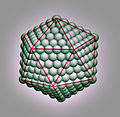Understanding and managing the spread of infectious diseases is a huge focus scientific research. Studies regarding infectious diseases concentrate on a rang of topics, including transmission, genetics, and immunity. Eakin et al. investigated the consequences of individual host behavior on infection risk and the spread of disease.
The Basics
Host organisms tend to exhibit attractive or avoidance behaviors towards infected conspecifics, but neither experimental nor theoretical methods have been sufficient for understanding the full role of individual host behaviors. Experimental data suggests that avoidance reduces infection risk. However, individual behaviors are unaccounted for in these studies, including changes in speed or turning angle when presented with an infected conspecific. Theoretical models have been very successful at describing disease ecology, but are unsatisfactory when it comes to understanding the consequences of complex individual host behaviors.
The Research
The researchers took advantage of both experimental and mathematical data to quantify the behavior of gypsy moth (Lymantria dispar) feeding on oak leaves contaminated with virus-infected cadavers and analyze the effects of cadaver-avoidance behavior. Nucleopolyhedrovirus LdMNPV is a species-specific baculovirus and was used to experimentally infect the cadavers. Nuclear polyhedrosis virus (NPV) is a virus which affects moths and butterflies primarily and is protected by a polygonal capsid.
The researchers found that risk of infection is affected by larval feeding history and small-scale spatial virus distribution. Combined with the mathematical models, this data strongly suggests that cadaver-avoidance alters feeding behavior of gypsy moth larvae. Overall, the main finding of this study was that cadaver-avoidance behavior significantly reduces risk of infection. The implications for the broader field of pathology are that individual host behaviors which directly affect exposure to infection risk are a key component in baculovirus transmission rates.
The Big Picture
This study suggests that infection is affected by spatial variability both in risk of exposure as well as risk of infection given exposure. This has greater implications for the spread of diseases, as it is likely that cadaver-avoidance and physiological resistance to infection are genetically distinct and evolve separately.
The significance of the results are clear when considering its application in medicine and public health. Although model systems were used, this research still maintains implications for the spread of disease in human populations.
References:
Eakin, L., Wang, M., & Dwyer, G. (2015). The Effects of the Avoidance of Infectious Hosts on Infection Risk in an Insect-Pathogen Interaction. The American Naturalist 185(1): 100-112.
Smitley, D. (2009). Entomophaga responsible for dead gypsy moth caterpillars. Retrieved from http://msue.anr.msu.edu/news/entomophaga_responsible_for_dead_gypsy_moth_caterpillars
Wiki Commons (http://commons.wikimedia.org/wiki/Category:Images)



